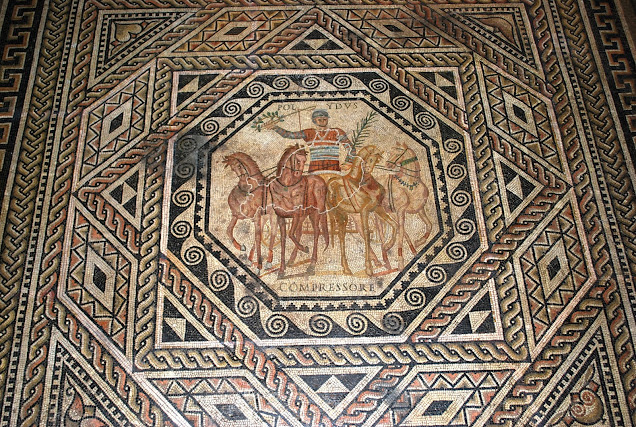Rhodiapolis: before and after!
 Because the renowned 'Blue Guide' mentioned 'Rhodiapolis', as the unexcavated city of Opramoas, I was convinced it would be worthwhile to visit the premises. And it was rewarding! During my trip through Lycia in 1999, I took a taxi from Finike to Haciveliler. In this small village I asked a small boy to escort me into the woods and to the ruins. He wearing open plastic sandals, me wearing Meindl. It was quite a stroll, but it is odd to visit an ancient city, almost completely hidden under a pine forest. The search brought me to the well-preserved small theater. Greater than a semi-circle, it has two unenclosed paradoi and no diazoma. Part of the stage-building still exists.
Because the renowned 'Blue Guide' mentioned 'Rhodiapolis', as the unexcavated city of Opramoas, I was convinced it would be worthwhile to visit the premises. And it was rewarding! During my trip through Lycia in 1999, I took a taxi from Finike to Haciveliler. In this small village I asked a small boy to escort me into the woods and to the ruins. He wearing open plastic sandals, me wearing Meindl. It was quite a stroll, but it is odd to visit an ancient city, almost completely hidden under a pine forest. The search brought me to the well-preserved small theater. Greater than a semi-circle, it has two unenclosed paradoi and no diazoma. Part of the stage-building still exists. The city's main claim to fame is that it was the home in the 2nd century AD of Opramoas. An important official in the Lycian League, who lived during the reign of Antoninus Pius (138-161), his generous benefactions to the cities of Lycia made his famous, not only in his own province but throughout the Roman Empire. He was honoured many times. Almost all Lycian cities received some form of help from him, in particular to rebuilt the ruined public buildings after the earthquake of 141. Also read my entries about Pinara and Lymira.
The city's main claim to fame is that it was the home in the 2nd century AD of Opramoas. An important official in the Lycian League, who lived during the reign of Antoninus Pius (138-161), his generous benefactions to the cities of Lycia made his famous, not only in his own province but throughout the Roman Empire. He was honoured many times. Almost all Lycian cities received some form of help from him, in particular to rebuilt the ruined public buildings after the earthquake of 141. Also read my entries about Pinara and Lymira. Marguerite Yourcenar introduced Opramoas in her great book Memoires d'Hadrian, as the merchant who helped the Romans to negotiate with the Persians.
 The newly excavated and renovated theater is spectaculair. Because of the building, but also because of the splendid view over the surrounding landscape. You can hardly imagine that the unearthed theater is the same one as shown in the picture taken in 1999. This picture is from the internet.
The newly excavated and renovated theater is spectaculair. Because of the building, but also because of the splendid view over the surrounding landscape. You can hardly imagine that the unearthed theater is the same one as shown in the picture taken in 1999. This picture is from the internet.The theater provides a model solution for the human traffic of a Hellenistic theater, with four separate access ways. The cavea mainly sits on the hillside. The eastern one-third is formed by the analemma wall behind the first two cunei on the east and this section has the tallest and strongest wall of the theater. The polygonal masonry walls have two rows of cut stone blocks. This displays Hellenistic features and the wall in this area is supported by four strong buttresses.
A good source for more information about the excavations is the article of Cevik, Kizgut and Bulut.



Reacties
Een reactie posten